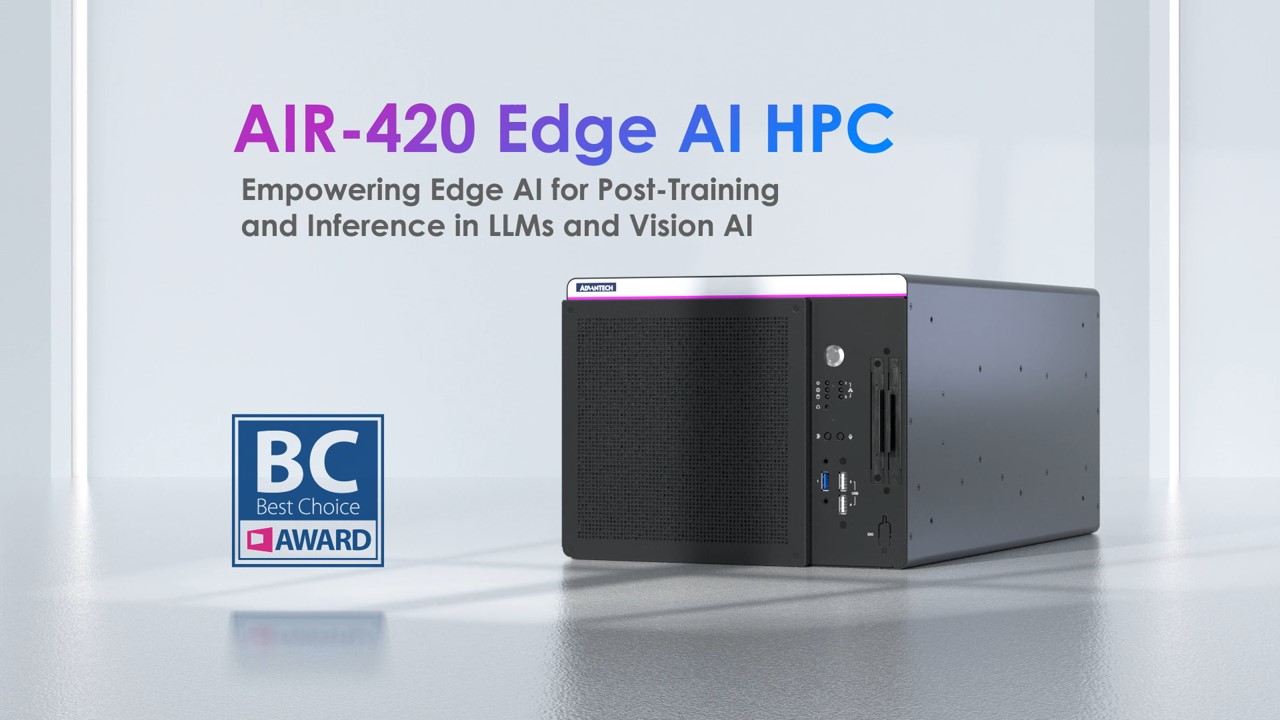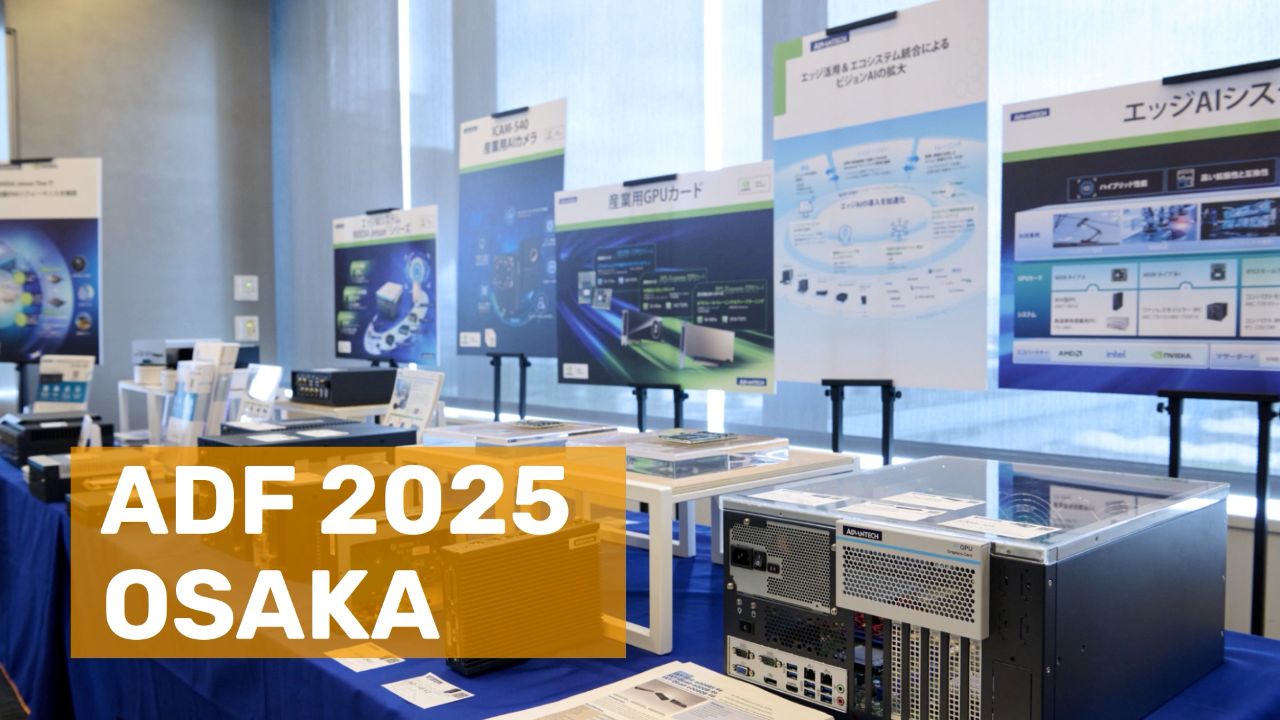Welcome to Advantech's InnoTalk.
I'm your host, Carolyn Swan, director of partnerships for the Industrial IoT Group. Today's topic is how to embrace GPU computing and AI inspection for manufacturing transformation.
Some of the manufacturing trends and needs that have been identified are flexibility, automation, and sustainable manufacturing.
Swiss response to customers' demands, supply chain disruptions, and sustainable practices, as well as addressing challenges for new materials, clean energy, and worker safety.
These, along with our partners, NVIDIA and our software partner, SpinGen, are some of the topics we're gonna be covering today.
Now with need to help us understand all of this is industry business development leader from NVIDIA, Zihan Wang, and our Infinite Software partner, CEO Jesse Chen from SpinGen, along with Advantech's assistant manager for industrial GPU compute, Henry Wu.
Welcome, and thank you all for joining us. So let's get started with our partner NVIDIA and understand the landscape industrial manufacturers are facing today.
Welcome, Zeehan. We're seeing more and more the need for flexibility, automation, and sustainability in manufacturing.
NVIDIA's AI applications enhance product engineering, smart manufacturing, and supply chain optimization.
Can you tell us a little bit more about NVIDIA's AI and high power compute solutions for manufacturers?
Yeah. Glad to, glad to, Caroline.
So, NVIDIA is a platform company.
If we take a layered view of what our solutions are, there are form layers.
At the bottom are the hardware layer which is known to most of the audience probably.
The solutions include our GPU, DPU, and CPU.
And on top of that are our libraries and SDKs which are essentially the backbone of a lot of the industrial software for various use cases.
They are tuned and optimized for our GPU acceleration.
On top of the library stack, it's the platforms HPC, AI, and Omniverse for industrial digital twin. And at the top layer are our frameworks, which spans across the spectrum of applications from industrial a quick overview of, our solutions, in the manufacturing and industrial space.
Thank you so much, Simon.
That ties into another question that we are curious to know, and I'm sure our audience is thinking about. What are some of the industry trends, that y'all are seeing for smart manufacturing and manufacturers to automate their facilities?
That's a good question. We've seen a lot of interest from our conversations with customers.
To quantify what we've learned, I I recently found a very good survey from one of, the great industrial automation service provider called Rockwell.
I put out two responses survey questions. The first is how important do you think smart manufacturing is to the future success of organization?
And, as expected, eighty percent of the responses think it's from moderately important to extremely important.
And when was asked about when does your organization plan to adopt smart manufacturing, Fifty percent of the responders said they plan to do this within the next year.
That is no small task and a tall order. That leads into another important question.
How tell us a little bit more about Advantech and NVIDIA's joint solutions for manufacturers that can really enable them and facilitate that adoption of, smart manufacturing, automation, and AI in those facilities?
Mainly our solutions, I can speak from the software side and the hardware side. Let me start from the software side. First, is that we have a joint software ecosystem where the software is optimized on NVIDIA's solution stack and they are also optimized for Advantech GPU embedded industrial PCs.
Those software can be used for defect inspection, for worker productivity, observations and for predictive maintenance and all types of use cases.
Right? And on the hardware side, as I indicated, many of the NVIDIA edge products, especially the Jetson and the professional visualization products are embedded in Advantech industrial PCs where they can where a third party system integrator or reseller can take this solution to their end customers.
Could be a manufacturer, could be a farm, could be a supply chain logistics provider.
Thank you so much, Zeehan. I am curious to know if you can speak to a little bit more on any of the software stack that goes with the Advantech and NVIDIA joint solution, right, that might go with, a vision system or that may go with that GPU?
So we've seen some a lot of interest in using, vision based analytics in a manufacturing environment.
Some of the typical use cases are intelligent inspection, productivity analysis, and the functional safety. Right, so let me just give you some more details around each of the use cases.
Intelligent inspection is mainly image classification, object segmentation, or segmentation models identifying missing or incorrect components and cosmetic defects etc. And the workflow really starts from the image collection or the customer can use synthetic data generation to generate those training images and, they label them, they train the model, tune the model, and productivity analysis, it's a similar, workflow for, object detection or segmentation to identify bottlenecks on a factory floor. And of course we will have a privacy protections to make sure no personal identifications are leaked and the workflow is similar as inspection.
The final the third use case is around functional safety where sensors, all types of sensors detect potential danger situations proactively and safety controls are centralized, meaning sensory information is analyzed, workers are warned, additional information is submitted to local robotics control systems, to, ensure functional safety.
So Zena, can you tell us a bit more about the latest AI technology development that can be used in manufacturing, and what are the ways manufacturers can deploy this?
In terms of the implementation, there are a couple of ways where a potential customer can implement our solutions and each solution has its pros and cons.
The first approach is, do it in house, leveraging our SDKs and the frameworks.
One known is, Metropolis framework so that customer has, their customized solution.
They own the entire IP and they can learn from this deployment process and prepare for future projects.
Right? And some of the things they need to be aware of is, first, it this deployment development and deployment will require their, workforce the knowledge in such AI deployments on the NVIDIA platform. There might be a learning curve behind it and there's some potential development lead time involved.
That's the first approach to in house. The second approach is, buying market ready solutions from independent software vendors or what we call ISVs.
The pros is that, the customer gets market ready solutions and they get continuous innovation by subscribing the third party's solutions.
The only thing we, the customer need to be aware of is that they don't own IP and the solutions may not be very customized to their specific need. They might have to tune or do some of the additional customization on top of it.
The third option is to hire a a third party AI consultancy.
Those consultancies are experienced third party developers.
They've done many of the such projects. They can develop customized solutions for the customer and the customer owns IP.
And it it still, the customer needs to be aware that it still involves some of the development lead time, the POCs, and the scale outs.
That's are the three options, that a customer can, employ those, software solutions.
And the good news is that Advantech and NVIDIA can work with them to basically help them decide the best option for them and help them implement whether help them in house development or help them find a best partner, they can leverage.
Thank you, Zihan. Wow. It almost seems like you need a PhD in AI just to wrap your head around this. But it sounds like that's actually not the case from what you're sharing with us, is that it really is possible to deploy these solutions in a manufacturing setting with Adantec's hardware built on NVIDIA GPU and the software application stack. So, Zehan, another buzzword right now is generative AI. Can you share a little bit about how Generative AI supports operators and technicians in the manufacturing space?
Happy to. We've seen a lot of interest from customers and partners utilizing this technology, and, this is a kind of a special use case of generative AI. This use case is called RAG or RAG, meaning retrieval augmented generation.
What we do is that we link a large language model with a vector database and we funnel those, operator manuals or repair manuals into the vector database and we query the the vector database.
Once the vector bit database generates answers, it will go through the large language model and then the guardrail back to the engineer. So he gets very, easy to understand logic answers from the manual. Previously, if an engineer or technician needs such support, he or she might need to flip through a thousand page operator menu to find the answer. It takes a lot of time, but now it's really speed up their time. The purpose of this technology is to augment technician or operator productivity on the factory floor to improve their operations.
Well, thank you so much, Sehan. We are so fortunate to have NVIDIA's expertise and partnership, on this journey.

.jpg)


